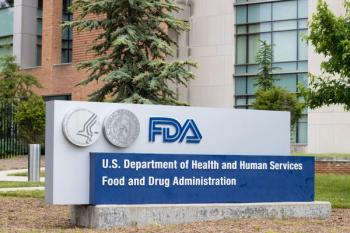
Consensus Guidelines for NGS in Sarcoma Diagnosis, Treatment
Key Takeaways
- Sarcomas exhibit low mutational burden, complicating precision oncology; NGS identifies potential biomarkers and tumor-agnostic targets.
- NGS is not routinely supported in sarcoma care; selective application in research settings is encouraged to advance molecular understanding.
Next-generation sequencing (NGS) holds great promise for identifying 'tumor-agnostic' therapies, but evidence does not support its routine use in clinical care and diagnosis of sarcoma, a consensus statement concludes.
Sarcomas represent one of the most heterogeneous groups of malignancies, encompassing more than 70 distinct histologic subtypes and numerous ultrarare entities. Despite their diversity, sarcomas generally exhibit a low mutational burden, which complicates the application of precision oncology approaches. In recent years, next-generation sequencing (NGS) has become widely available, raising questions about its role in sarcoma diagnosis and treatment.
NGS plays a critical role in identifying biomarkers that may eventually guide future therapies for sarcomas, according to a recently published a consensus review in
Sarcomas are characterized by either genomically simple (fusion-driven) or complex (extensive genomic rearrangement) features and generally exhibit a remarkably low mutational burden. Studies show misdiagnosis rates of between 10% and 25% when sarcomas are not reviewed by experts. A highly fragmented diagnostic and therapeutic landscape contribute to the complexity of the situation.
NGS is seen as crucial for identifying "tumor-agnostic targets" — genetic and other characteristics of cancer cells that would respond to treatment regardless of the organ or tissue they are affecting. NGS analysis can also identify previously unrecognized heritable genetic predispositions that impact treatment, follow-up, and risk management, which are comparable to rates seen in other cancers. NGS is not part of routine clinical care, but NGS technologies are expected to be pivotal in advancing the molecular understanding and identifying future biomarkers for sarcoma. The molecular knowledge of sarcomas, especially ultrarare subtypes, remains extremely limited.
The inherent challenges associated with rarity, heterogeneity, and limited molecular understanding of sarcomas meant that guidelines on NGS use were currently lacking. This gap prompted Serrano and his fellow sarcoma experts to work on arriving at a consensus about how to optimize clinical application of NGS and ensure high-quality, cost-effective patient care.
Among their most important conclusions was that notwithstanding the power of NGS to identify genetic alterations, only a small fraction of sarcomas harbor actionable mutations, and the therapeutic benefit of matched treatments remains limited. Prior to this consensus, no standardized recommendations existed for when and how to use NGS in sarcoma care.
The consensus encouraged the sequencing of all sarcomas in a research setting utilizing pangenomic tools, such as whole-genome sequencing with RNA sequencing, to drive molecular discovery. Specifically, the addition of whole transcriptome sequencing is considered a potential "inflection point". RNA expression data, detectable via NGS platforms, has been shown to guide nearly half of the therapeutic recommendations made by molecular tumor boards in comprehensive molecular analyses of rare cancers, including sarcomas.
The consensus group found agreement in several key observations regard NGS utility in the setting of diagnosing sarcomas. Upfront use of NGS fusion panels for all new sarcoma cases is not recommended and a definitive diagnosis does not require NGS for all cases, as most subtypes display classic histologic features.
Approximately two-thirds of all sarcomas, particularly those with complex karyotypes, are unlikely to harbor specific genetic alterations, suggesting molecular testing often provides no added value for these subtypes, concluded Serrano and his colleagues. Traditional pathology, immunohistochemistry, and targeted tests (FISH, RT-PCR) remain sufficient in many cases.
The group stated that across the reviewed studies, the clinical benefit rate (tumor response or stable disease from matched therapy) was estimated to be only 0.4% when considering all patients who underwent NGS.
Effective use of targeted agents relies heavily on accurate sarcoma subtype diagnosis, emphasizing that an accurate diagnosis is indispensable, they noted. NGS results must be interpreted in the context of expert pathology review and multidisciplinary tumor boards. Testing performed in nonexpert centers risks misinterpretation and inappropriate treatment recommendations.
For managed care organizations and health systems, the recommendations strongly advocated highly selective use of NGS. Routine, nonselective NGS for all sarcoma patients is not justified. Instead, according to consensus, testing should be reserved for specific subtypes or clinical scenarios where actionable alterations are likely.
Patients should be referred to sarcoma-expert centers, where diagnostic accuracy is higher and NGS can be applied judiciously. This reduces misdiagnosis, avoids unnecessary costs, and improves outcomes. Managed care pathways should ensure that NGS results are reviewed by molecular tumor boards, integrating clinical, pathologic, and molecular data before treatment decisions are made.
Newsletter
Get the latest industry news, event updates, and more from Managed healthcare Executive.


















































